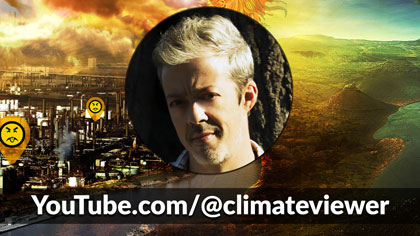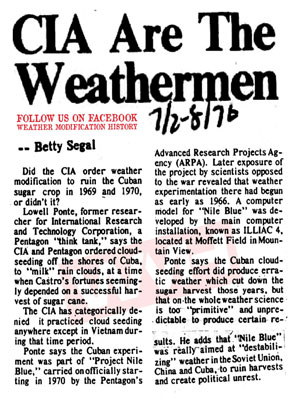Genetically Modified Weather: The Tale of FROSTBAN™ Synthetic Bacteria by Dr. Rick Shankman, CEO Phantaslube.
https://www.technocracy.news/genetically-modified-weather-the-tale-of-frostban-synthetic-bacteria/
Question: What was the very first GMO introduced into the ecosystem?
I’m willing to bet you’ll never guess it right.
Answer: FROSTBAN™ genetically engineered variant of Pseudomonas syringae (P. syringae) bacteria.
Yes, the first GMO was a single-celled saprophytic bacteria engineered to keep frost off of crops.
How was this done?
- P. syringae’s DNA was digested with enzymes;
- Individual DNA segments were made into plasmids, which inserted randomly to form variations of recombinant DNA;
- Other common bacteria was transformed with the recobinant DNA plasmids, which then became part of the bacteria’s DNA;
- The ice-gene segment was identified in the recombinant DNA;
- The ice-gene was amplified via PCR (polymerase chain reaction) technology;
- Mutation of the ice-gene was done to remove the ice-forming genetic coding;
- Then the mutated (non-ice-forming) genetic code was inserted into the P. syringae bacterium to create the Ice-minus strain
- The genetically-modified Ice-minus strain now lacks the surface coating that helps produce frost.
These facts, by themselves, are boring. FROSTBAN™ (never sold commercially – original company merged into Seminis Inc.), is boring.
The tale to come — I promise you — not boring.
We begin with excerpts from the NPR Research News’ January 29, 2013 Story entitled: Bird, Plane, Bacteria? Microbes Thrive In Storm Clouds…
“Microbes are known to be able to thrive in extreme environments, from inside fiery volcanoes to down on the bottom of the ocean. Now scientists have found a surprising number of them living in storm clouds tens of thousands of feet above the Earth. And those airborne microbes could play a role in global climate.”
Take a moment to ponder that idea. Airborne microbes (found in high-altitude clouds) might be a key factor in global climate.
“Athanasios Nenes, an atmospheric chemist at the Georgia Institute of Technology, says we still don’t know much about which microbes are living high up in the atmosphere or way out over the ocean.
… To find out, Nenes had some of his students hitch a ride on a NASA airplane that was on a mission to study hurricanes. They made multiple flights and were able to collect air samples from about 30,000 feet over both land and sea. The samples turned out to contain some fungi — and a lot of bacteria. ‘And this was a big surprise because we didn’t really expect to see that many bacteria up there,’ Nenes says.
… Back on the ground, other members of the research team used genetic techniques to identify the bacteria. One of them was Georgia Tech microbiologist Kostas Konstantinidis.
‘We were able to see at least close to 100 different species, of which about 20 were in most samples,’ Konstantinidis says. Some of those 100 species were from the ocean. Others came from the soil and from fresh water.”
Okay, so the GeorgiaTech boys are at 30,000 feet with NASA and find bacteria from soil, lakes and oceans. Why is this interesting? Because bacteria play a role in natural cloud seeding. What does that mean? It means bacteria are a factor in rain and our natural shielding from the heat of the Sun – clouds! In short, some special airborne bacteria make clouds and rain.
“Up at around 30,000 feet, most clouds are made of ice crystals, not water droplets. To start forming, those ice crystals need to grow around some kind of particle.”
Now the import of this tale begins to unfold.
But first, a flashback to 1987, with Time Magazine’s “The Most Hated Man in Science“… Jeremy Rifkin.
“In the field of public policy, no one is better than Rifkin in the martial arts of social activism: lawsuits, petitions, debates, lectures and media manipulations. Each year the three attorneys on the staff of his Washington- based Foundation on Economic Trends file about six lawsuits and threaten more. Among other causes, he has battled… agricultural experiments involving open-air use of genetically altered bacteria.
… He fears that society, inspired by science, will take a diminished view of human life as no more than a few strands of DNA. ‘This is a new technology that goes to the heart of our values,’ he says. ‘The end result could very well be a brave new world, very damaging to our human spirit.’ Says Andrew Kimbrell, an attorney for Rifkin’s foundation: ‘Everything that’s living has a meaning and is owed reverence and care. There must be a balance between efficiency and empathy. We see ourselves as helping to provide that balance.’
… One of Rifkin’s first assaults on DNA technology was directed at Steven Lindow, a plant pathologist for the University of California, Berkeley. Lindow had discovered a way of snipping a particular gene from bacteria so that the redesigned microbes resisted frost formation down to 24 degrees F. Theoretically, crops sprayed with the microbes could be protected from cold snaps. In 1983 Lindow got permission from the NIH to test his bugs, which he called ice-minus, on a small plot of potatoes in Northern California.
Lindow’s bugs were to be the first genetically altered bacteria released into the environment. Although there was strong evidence that the microbes were benign, biologists at Berkeley and the NIH had failed to consider fully the experiment’s environmental impact. The oversight allowed Rifkin to sue to block the experiment. The courts agreed, and, thanks to Rifkin, testing was postponed for three years while the NIH, the Department of Agriculture and the Environmental Protection Agency struggled to draw up rules under which genetically engineered products would move from the lab to the field.”
It was Rifkin’s efforts to block the field testing of FROSTBAN™ that led to the very first enactment of a county land-use prohibition on the release of GMOs into the environment. How did Rifkin convince Monterey County, California to institute the ban? A story in the May 1987 issue of The Scientist — while lambasting Rifkin — provided some interesting early assertions of Rifkin’s that might explain how, while possibly making his previous detractors (30 years later) now have to eat their words…
“… [E]nvironmentalist hysteria intervened, and anti-science activists successfully fought the outdoor testing of ice-minus pseudomonas (trademarked as Frostban) for more than a year. In January 1986, they alleged that one-celled organisms can cause ‘more death and destruction than all the wars we have ever fought,’ that the research that created this technology is morally bankrupt, and that ‘it is not for scientists, bureaucrats and industrialists to play God.’ Jeremy Rifkin, of the Foundation on Economic Trends, alleged that the modified bacteria ‘may decrease rainfall.’ Such steamy eloquence was successful in Monterey County, Calif., and local authorities cancelled a test on flowering strawberry plants by the firm that developed ice-minus, Advanced Genetic Sciences (AGS)” [emphasis mine].
So, 30 years before GeorgiaTech flies with NASA to 30,000 feet and finds terrestrial bacteria seeding clouds at high-altitude, Rifkin suggests that GMO (anti-ice-forming) bacteria might decrease rainfall.
It is important to note that one of the reasons FROSTBAN™ was eventually abandoned by its original developer was that the company could not prevent the GMO from escaping the test site and infecting other (offsite) bacteria.
What seems to have developed in its place? Genetic modification of the crops themselves to battle frost and the bacteria that help make frost.
Now, fast forward to today and Monsanto’s Roundup brand of glyphosate-based herbicides.
It has been recently reported that glyphosate-based herbicide kills beneficial soil-based bacteria.
“[The] negative effects glyphosate has on soil, … include compaction and resultant runoff, the killing of beneficial microbes and bacteria, and the exhaustion of necessary minerals and other nutrients that plants require.
… In an interview for The Organic and Non-GMO Report,[Robert] Kremer explained how glyphosates not only kill beneficial microbes and bacteria but encourage the spores that produce the fungi responsible for sudden-death syndrome that affects both corn and soybeans. Glyphosate ‘locks up’ manganese and other minerals in the soil so that they can’t be utilized by the plants that need them. It’s also toxic to rhizobia, the bacterium that fixes nitrogen in the soil. Kremer found that some Roundup ready crops are more susceptible to Fusarium, a type of fungi that produces mycotoxins in cereal crops that are harmful, even deadly, to humans.”
Maybe widespread/global killing or incidental genetic modification of beneficial soil-based bacteria that help form clouds that protect us from the Sun — and give us life-giving rain — isn’t such a good idea after all.
Original Story Deleted by MIT's ClimateX
OTHER VIDEO REFERENCES
https://climateviewer.com/enmod/
https://climateviewer.com/2014/05/06/biofuels-help-climate-change/
USDA MONSANTO/ELECTROSTATIC CLOUD SEEDING OVER TEXAS JUNE 2017
https://www.youtube.com/watch?v=GvlUHX2dQDc
https://www.youtube.com/watch?v=FiW6OKPIWkk
https://www.tdlr.texas.gov/weather/agendas/wmagenda082417.htm
https://www.ars.usda.gov/people-locations/person/?person-id=2539
WATER 2025 CONFLICT MAP
http://web.archive.org/web/20050204160857/http://www.doi.gov/water2025/
http://web.archive.org/web/20050204124930/http://www.doi.gov:80/water2025/supply.html




























